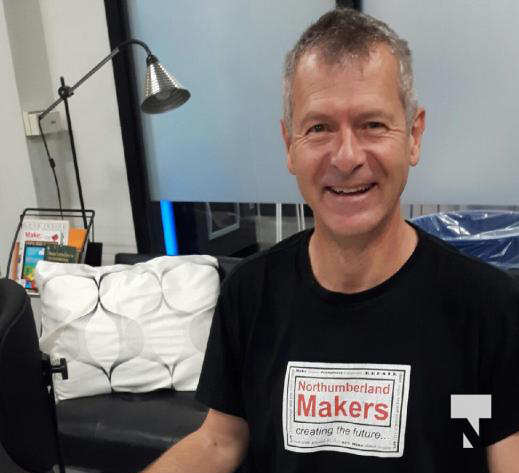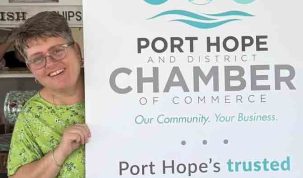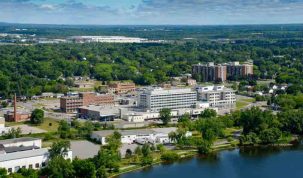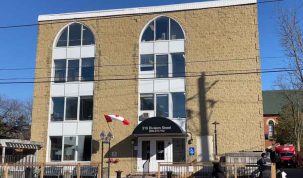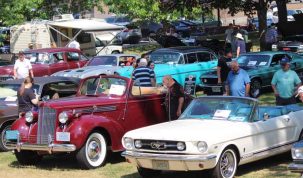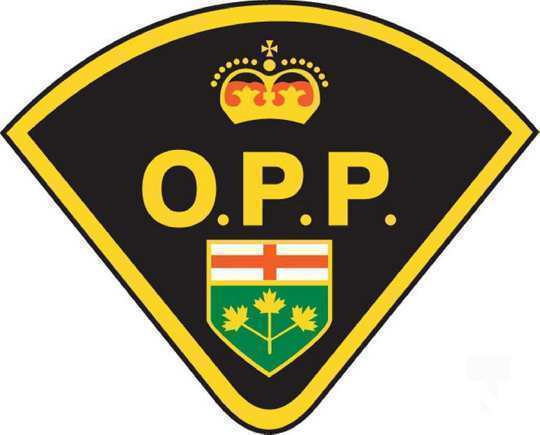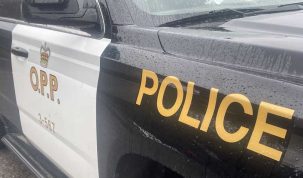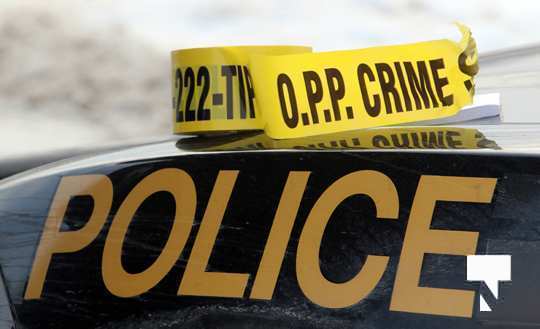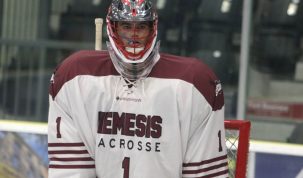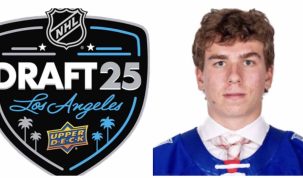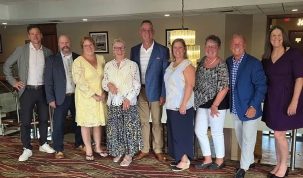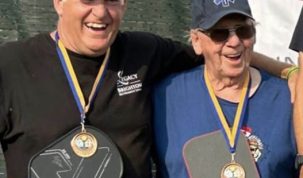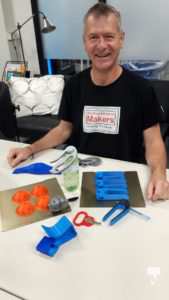
Cecilia Nasmith/Today’s Northumberland
Working happily away in their lab at Cobourg’s new Venture 13 centre, the Northumberland Makers turn out plenty of neat things with their 3D printers.
Along with the fun plastic pieces like Daleks, pangolins and meshing nautilus gears, however, they are turning their ingenuity into a new channel with their Assistive Devices Project.
Northumberland Makers vice-president and project lead Colin Slade already has a freshly printed inventory of several dozen pieces in the form of five handy gadgets that could make everyday tasks easier for anyone with functional challenges such as arthritis.
It’s fun to turn out things like cubes with meshing pieces and the fully functional nut-and-bolt at 2,000X scale, Slade said, “but at the end of the day, it’s just stuff.
“We can start to do some social good with our 3D printing to help people in Northumberland County with mobility issues.”
Slade displayed the first five devices they have begun to print and stockpile.
What appears to be a set of tongs actually slides over a hand. At the centre where the arms join, a hole can hold a pen to make the task of writing easier.
A similar device to make writing easier comes in the form of two hemispheres that fit together to hold a pen, and enable someone to write by gripping the ball instead of the pen.
An easy-grip large handle is attached to a holder for a key. This allows someone to open a door by gripping a large handle instead of a small key.
A two-part device makes fingernail clipping as easy as a healthy push. Attach your big toenail clipper, insert your finger and push down.
A ratchet with an easy-grip handle is just the right size to unscrew a pop-bottle or water-bottle cap. Slade is looking at bigger versions to make opening a regular-size jar easier.
“It allows us to contribute as an organization to the people of Northumberland County, a way of socially engaging our group to do some good,” he said.
Even the material is socially responsible, a biodegradable vegetable-based polymer called PLA (polylactic acid). Other common materials like nylon give off toxic gases in the production process.
“Our product does not warp or change dimensions,” Slade said.
“It has a lower melting point but, for these purposes, melting point is not an issue.”
Members not otherwise occupied with their own projects have been printing off pieces for the inventory, but Slade notes that 3D printing is not a quick project.
In many cases, a project can be left to print overnight and retrieved the next morning, he said, showing off a freshly printed tray of three blue pen-grip tongs and one of four orange pen-grip hemispheres.
The tong pieces took 11 hours to produce three, Slade said.
As the project grows and they network more, he figures, they will have a better idea of what devices are needed and can focus their efforts accordingly. For example, there are custom-fitting devices, like a piece that fits over a hand to hold an eating utensil or a finger-mounted pen holder for writing – these would have to be made to fit a person’s own hand or finger.
This initiative complements a larger program called Makers Making Change.
“It’s an organization that makes devices and connects people, countrywide,” Slade said.
Northumberland Makers have been in touch with their Toronto office, he added, and made quite an impression with the inventory they are amassing – even before there’s a system in place to find where these pieces are needed and get them there.
This is Slade’s next challenge. He is putting the project on social media and including a page on the project on their website.
He has been meeting with community partners who might help the group ascertain what might be needed and connect them with the people in need of them.
He is also setting up a Go Fund Me campaign to help cover the raw material called filament. A $35 donation, for example, could potentially produce dozens of pieces. In a best-case scenario where the campaign gets an overwhelming response, they might even purchase an additional 3D printer that can be dedicated exclusively for this purpose.
Ideally, Slade expects the campaign may interest more people in the organization as potential members, as well as spreading awareness of what they are doing to those who potentially could benefit.
Northumberland Makers describes itself as a community of creators, innovators and makers with a goal of improving equity of access to tools, technology and education.
Their summer Maker Camps, for example, threw the lab open to young people to introduce them to the art of the possible.
Each member has his or her own special skills to bring and share, Slade has found.
“I come in on a Friday night to print some of these (devices) and end up chatting with an electrical engineer, and we go off on a tangent to some project that is just incredible.”
One member is a school teacher who has printed snaky, slinky toys based on the pangolin that are great gadgets for those students who need a fidget toy.
“These things inspire people and, once they are inspired, they can do more,” he said.
“Your limit is your imagination and a few technical challenges.”
As much as he enjoys such projects, Slade is inspired by the ideal of service.
He described some recent soul-searching when he realized the happiest time in his life was volunteering in New Orleans over the four years following Hurricane Katrina.
“Maybe I’m not going to New Orleans any more, but I can give back to Northumberland County,” he said.
And if the Assistive Devices Project proves to be successful enough, he added, they would certainly consider expanding outside the county – making devices for those in need or even in helping other organizations set up their own maker labs.
In another exciting example of collaboration, Slade announced an upcoming project with the Toronto Makers Making Change group. For the first time they have participated in a build outside of Toronto, they will be coming to the Northumberland Makers lab one Saturday in late November or early December for a full day of building a device called a lip synch.
“It’s a device that allows paraplegics or people with arm or mobility issues to interface with electronic devices,” he said.
Slade has found that some one-million North Americans – who otherwise are disadvantaged in social, economic and other terms by not being able to use such simple devices as a cell phone – could benefit from this device.
He describes it as a sip-blow joystick kind of device operated by mouth through a straw.
“We will build them from scratch, and all the parts and electronics will be here. There will be a soldering workshop to teach people how to solder,” he said.
The two maker groups will devote an entire eight-hour day to building these devices, and Slade expects they will have 10 to 20 of them at the end of it for the people of Northumberland County who need them.


